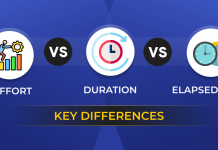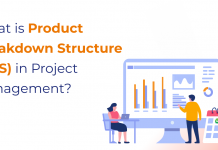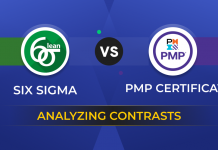
According to PMI’s “Pulse of Profession” 2015 report, it says that organizations are losing close to 108 million dollars for every billion spent due to project failure. A project fails due to various reasons. One particular reason that leads to project failure is due to scope creep – the expansion of projects outside of the planned objectives. As an enterprise you have to take measures to control project enhancements and incorporate project management methodologies to ensure you and your team is not made victim to achieve unrealistic results.
To do that first you have to identify the common pitfalls that lead to scope creep.
1. Lack of Comprehensive Specification:
This has to be one of the easiest ways to fall into a trap while gathering requirements with regard to product specifications by a project team and this leads to miscommunication and creates false expectations by the customer.
For instance, when your customer asks to provide a Facebook share button, do you feel that is such a simple task? And as a project manager, you and your team simply get on with it by simply adding a button that allows you to share a post on a user’s Facebook wall. But, then the client’s perspective was altogether different, they needed a custom dialog for sharing Facebook despite their APIs limitations; the button should also showcase the current count of shares from various sources; posts to be shared in an automatic manner for pre-defined groups and even integrating Facebook’s comments in your post.
Expert Tip: Ensure you write down comprehensive specifications for the project that you are about to work on. Mention constraints like things that cannot be included. Doing this it sets a great foundation for the project to begin with and also allows the customer knows beforehand about the extra work and the budget required for the same.
2. Failure to Create a Flexible Model for Project Alterations:
This happens in almost all projects. Clients will have a vague idea and propose the same to the project team and once the project team finishes a couple of iterations and when the products look to take shape, the clients start to come up with new additional features. This is something common that happens in most enterprises, but then if you start quoting for each and every change when you agreed upon a fixed model, your relationship with your client deteriorates very quickly and then there is no coming back from that.
Expert Tip: Create a flexible model for incorporating new features and state your hourly rates for extra working hours while negotiating your contract. In fact, for enterprises there should be a recurring revenue stream, by negotiating support development once the development is complete will increase the overall business value with your client for a long period of time.
3. New Features Exaggerated as Bugs:
When it comes to the user interface, introducing new features as bugs is a very common scenario. For instance, when you build a new design for a theme, the framework should be planned carefully. Without a wireframe that has been signed off at the beginning, there will be plenty of change requests coming your way. This prolongs your deadline and consumes additional budget and man hours.
Expert Tip: As a project manager, you should discuss key functionality and designs with your clients upfront. There has to be one person who has to take business-critical decisions here. It can be either the project manager with his / her expertise or relying on previous examples (links and screenshots) to implement functionality as expected.
4. Depending too Much on Your Customer:
This one a critical reason why a project develops scope creep, depending on your customer during the development stages will completely change workflow and planning. There are many case studies where project customers have gone AWOL for a minimum of 6 months and close to a couple of years and suddenly come back with a feature or two and request you to fix the bug which happened due to some random updating of 3rd party plugin. In fact, customers do not even give proper access to data for long periods of time and this pushes the project’s deadline.
Expert tip: Ensure your contract properly states acceptable response times from the customer and requires full details in the beginning itself. In fact, add a couple of terms that cover in cases of project delay and its consequences such as added costs, and closing the project after the payment is made before starting the next phase.
5. Disorganized Reporting System:
On many occasions, it is because of a confusing or disorganized reporting system that leads to a project that never sees the end of the tunnel with numerous fixes and multiple added iterations. This usually happens when the teams is working with customers by exchanging emails and phone calls and fail to add those inputs to the reporting system.
Expert Tip: Ensure there is a proper reporting system to track development, bugs, potential features etc. This will in turn make it very easy to monitor and manage scope creep and check whether the client is crossing the line between the work and extra that has been agreed to in the contract.
6. Impractical Initial Estimation Techniques:
Quoting the wrong number has become a problem that persists within the best of the best organizations across the globe. Considering the fixed fee projects, it becomes all the more difficult, and the constant heckling with customers and the project team becomes an unsavory experience for both parties. Two major things that lead to under-quoting your work are:
-
- Inadequate understanding of the client’s vision for the project
- Problems that arise due to unexpected development limitations
Expert Tip: Lately, enterprises have started to offer a discovery session – wherein a paid iteration is performed before signing the contract. Here both the client and the project team would come together to discuss project details in length until both reach a consensus that covers every single detail in the best possible manner. With this paid consulting job you do not have to waste any time estimating or free researching to quote a number that is declined later.
7. Not Creating Proper Expectations from the Beginning:
Project scope creep can be completely avoided even before you enter into a working relationship with your client. Yes, you heard it right; project scope creep can be avoided from the beginning.
As an enterprise entering into a contract for a project, let the client know about your work flow and what are your expectations upfront. Most of the problems arise in a project when there is a lack of proper initial discussion.
Best practices to create a proper and elaborate initial discussion:
-
- Take an ample amount of time to finalize your workflow with your client.
- Ensure you have planned for risks from the beginning, and consider having a backup plan if something comes up unexpected
- Establish proper communication logistics with your client – decide when to meet and how many calls you can take in a week
- Take time to review potential edge cases and notify the same to the client upfront
- Clearly define the product limitations
- Ensure you have a plan in place for the projected growth
As a project manager, your skills will be best utilized when you work on business-critical projects that add value to both you and the organization. Create a project environment that fits your expectations. Look out for the regular pitfalls of scope creep in a project and avoid them by deploying proper project infrastructure to complete them in a successful manner.














